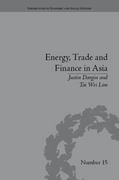Question
You currently have two tests to screen potential stocks to invest in from a list of 6,000 stocks: Test Number of stocks passing the test
You currently have two tests to screen potential stocks to invest in from a list
of 6,000 stocks:
Test
Number of stocks passing the test
A
5,000
B
4,500
a.
[1.5 Points] What is the probability that a stock passes test A? What is the probability
that a stock passes test B?
b.
[3.5 Points] If passing test A and passing test B are independent events, what is the
probability that a stock passes both test A and B? Call this new combined test, test C.
How many stocks do you expect to pass test C?
c.
[5 Points] You've gathered the following information about whether stocks pay
dividends based on whether or not they pass tests A and B:
Given a stock passes test A, the probability it pays a dividend is 0.7
Given a stock passes test B, the probability it pays a dividend is 0.8
Given a stock does NOT pass test A, the probability it pays a dividend is 0.25
Given a stock does NOT pass test B, the probability it pays a dividend is 0.1
What is the (unconditional) probability that a stock pays a dividend?
d.
[4 Points] Suppose you know that probability that a stock passes test C, given it pays a
dividend, is 0.8. What is the probability that a stock pays a dividend, given it passes test
C?
e.
[5 Points] Conducting your tests is costly to you. Test A costs $500 to complete, test B
costs $500, and test C costs $1,000 to complete. If you are interested in figuring which
stocks will pay a dividend, which is the best test for you to use? You should take into
consideration the relative costs of these tests.
Step by Step Solution
There are 3 Steps involved in it
Step: 1

Get Instant Access to Expert-Tailored Solutions
See step-by-step solutions with expert insights and AI powered tools for academic success
Step: 2

Step: 3

Ace Your Homework with AI
Get the answers you need in no time with our AI-driven, step-by-step assistance
Get Started


